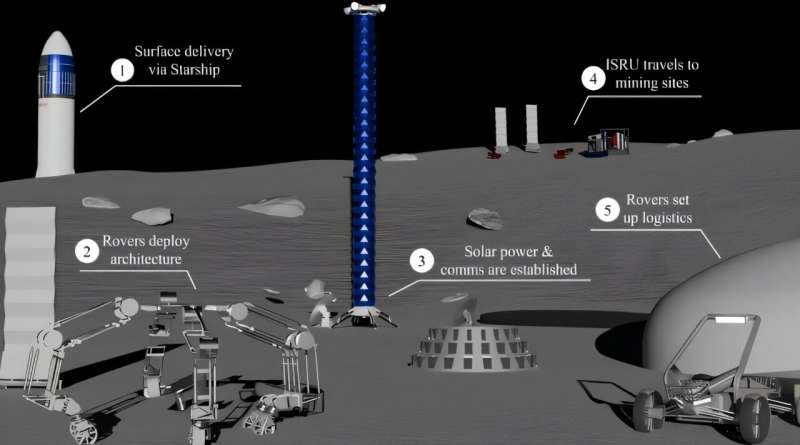
Getting back to the moon is the primary goal of NASA’s Artemis program, but what do we do once we get there? That is the challenge tackled by a group of students at the University of Illinois Urbana-Champaign, who wrote a proposal for a lunar infrastructure module they call the Trans-lunar Hub for Exploration, ISRU, and Advancement—or THEIA, after the proposed object that crashed into the Earth that created the moon as we know it today.
Their submission was part of the NASA Revolutionary Aerospace Systems Concepts—Academic Linkage project, where teams from various academic institutions submitted papers focusing on the theme of Sustained Lunar Evolution for 2024.
To be clear, THEIA is not meant to serve as the central hub of NASA’s lunar exploration activities. The responsibility would still go to the Artemis base the agency has been working on. It is meant to serve as a hub for four main things that the team believes every long-term lunar mission will need: power, communications, transportation, and In-situ resource utilization (ISRU).
The project’s mission requirements include providing local positioning, communications, and power to an area surrounding the lunar south pole. Various organizations are developing several pieces of infrastructure to do so.
First would be the delivery method to get there—like much of the overall Artemis project, THEIA would rely on delivery from a SpaceX Starship. The team calculated the initial launch requirements to get a basic setup up and running to be around 73 tons, well below the threshold of 100 tons the rocket is expected to be able to carry to the lunar surface.
That first set of equipment would include two other vital pieces of infrastructure—some LUNARSABER poles and robots to set them up. We previously did an entire article on the LUNARSABER project from Honeybee Robotics.
Still, as a succinct overview, it is an extendable tower with solar panels along its sides to collect energy. Then, it uses a series of transmitters and receivers at its top to broadcast both power and communication signals. They can also bounce signals between two towers, creating a basic mesh network on the lunar surface.
Content retrieved from: https://phys.org/news/2025-01-term-lunar-infrastructure-hub-moon.html.






